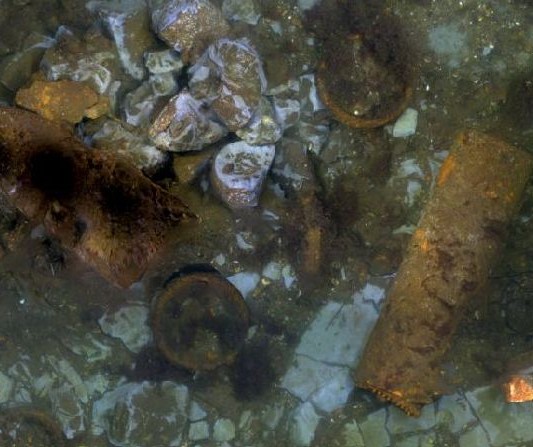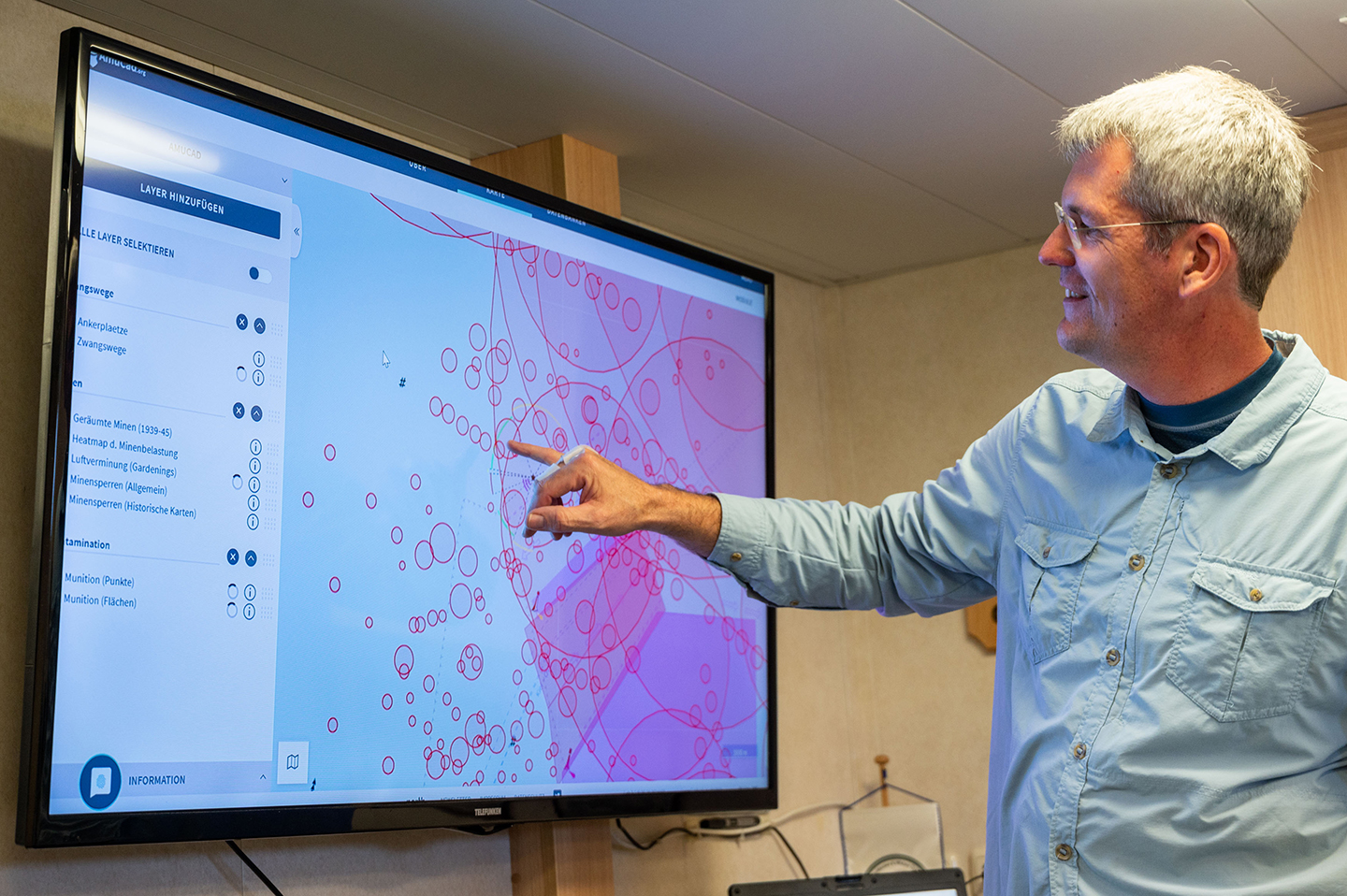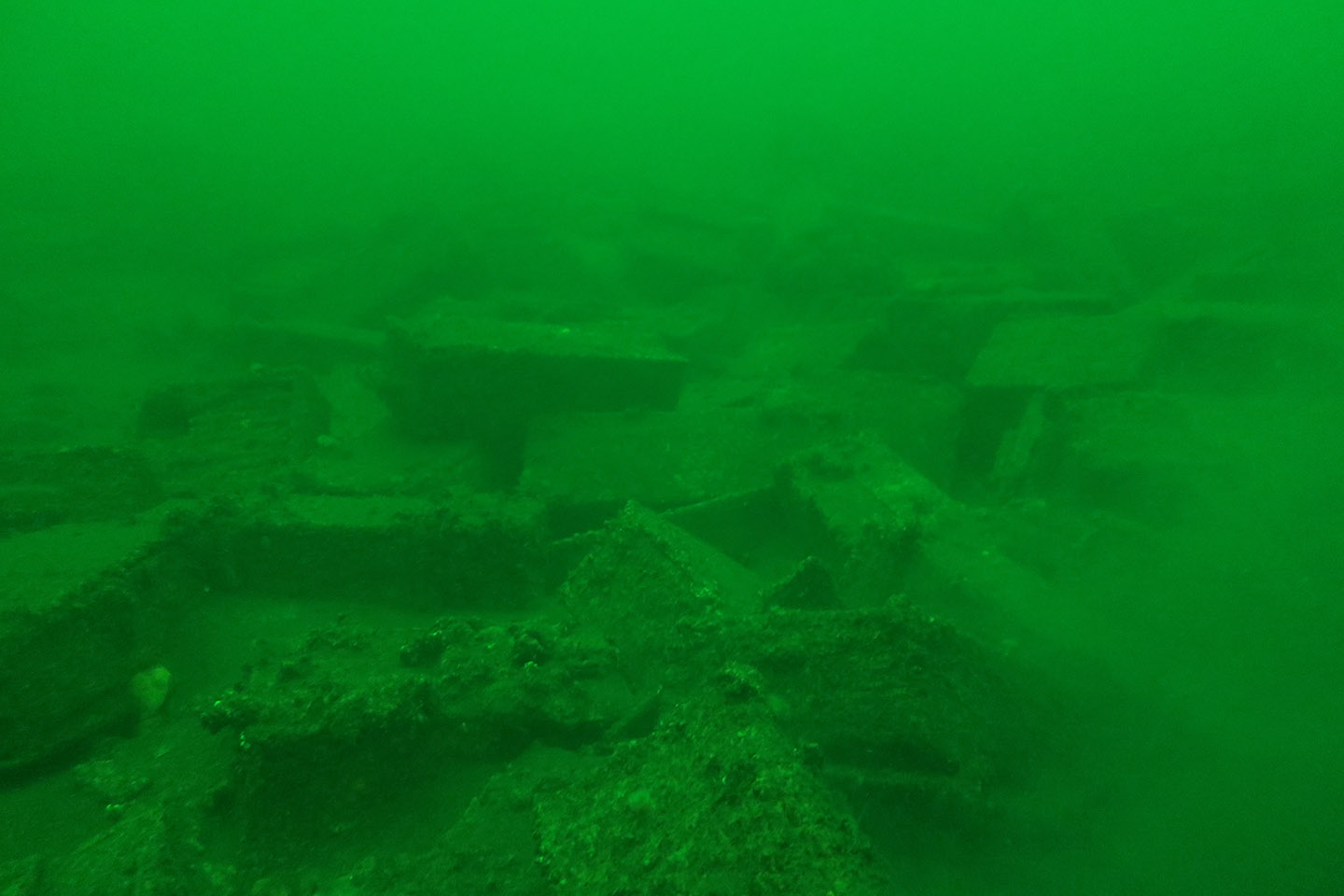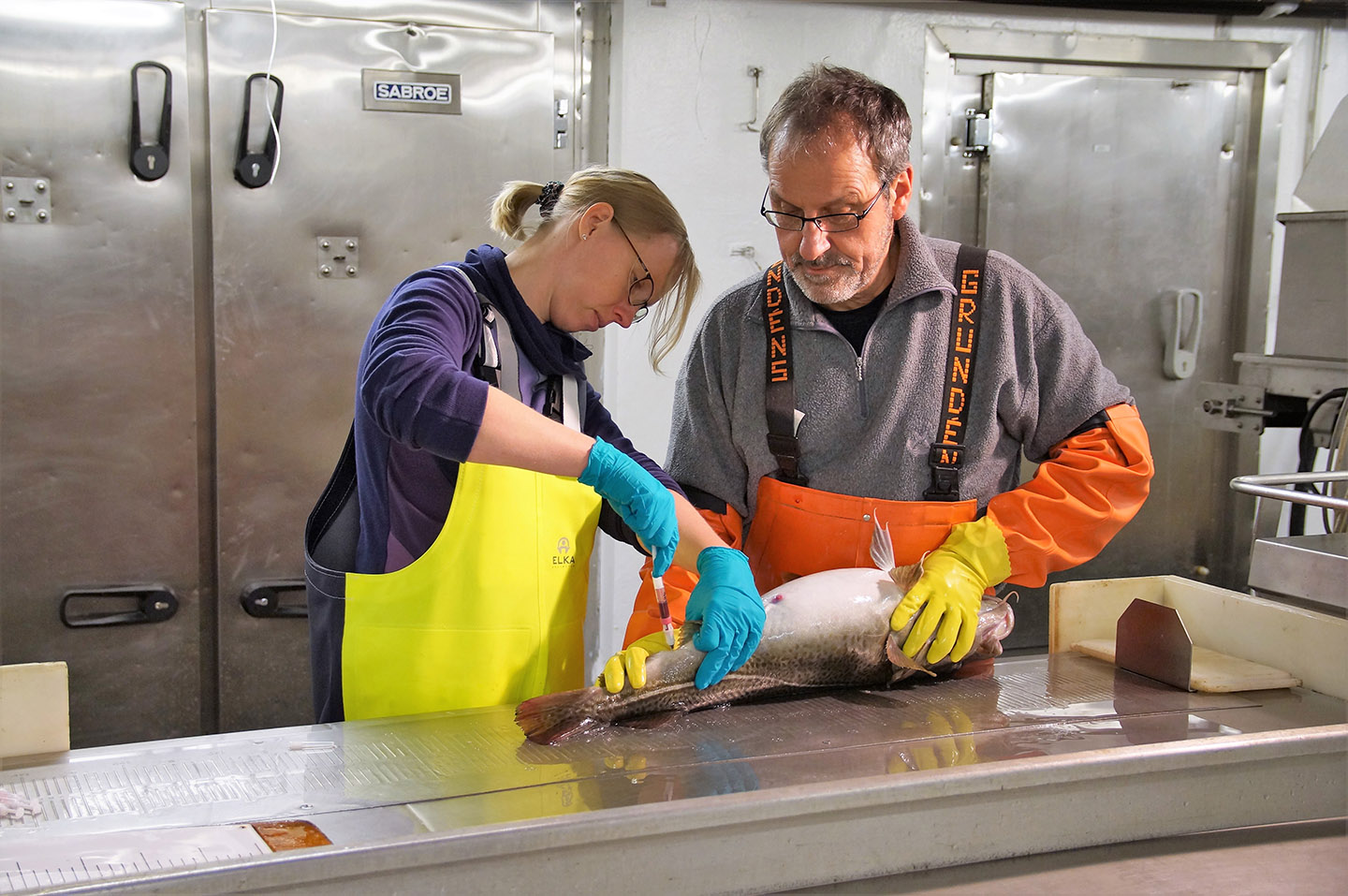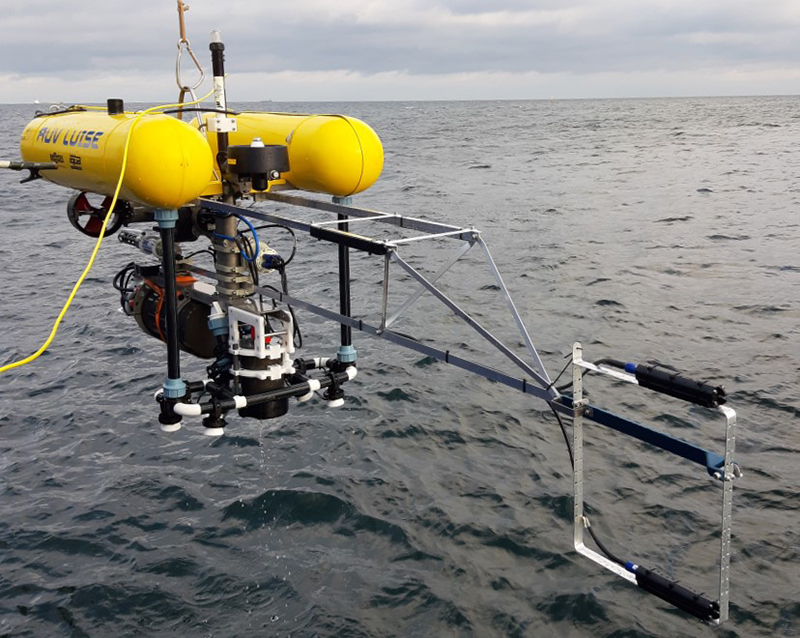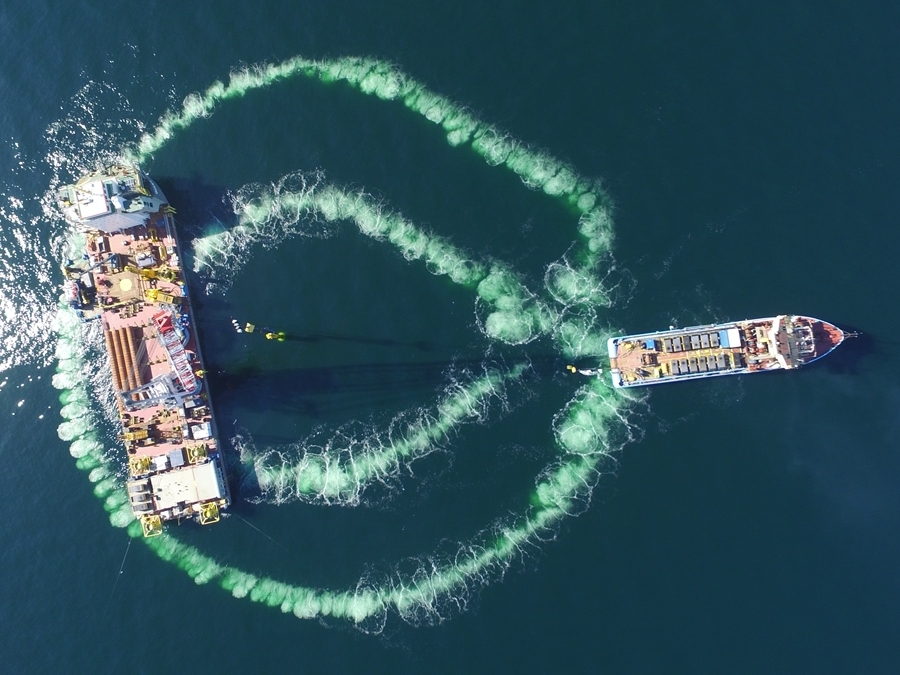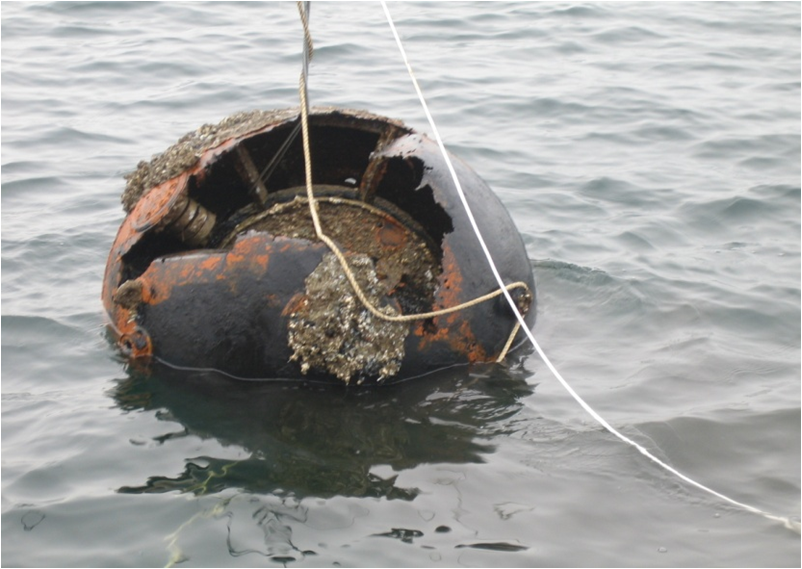What is so dangerous?
Munitions are containing hazardous chemicals. Mistaking lumps of explosives for pebbles or white phosphorus for amber on beaches may cause direct harm to your skin, especially on your fingers and hands. The chemicals inside the munitions can catch fire instantly if warm, dry and in the air. The munitions can explode too.
The munitions have been under water for nearly 80 years. Many parts of the munitions are made of iron, which rusts in salty seawater. The metal becomes thinner and thinner due to the rust. Holes and cracks appear, and chemicals get into the sea.
Thus, there are two very different dangers: You can be injured by explosion or fire. You can get sick from even very small amounts of these chemicals. But that’s not all. The toxic pollutants are spread in the seawater. Animals such as mussels, fish, and birds will eat them too. The animals become ill or die. If we eat seafood with these chemicals inside, we might get sick from it too.
